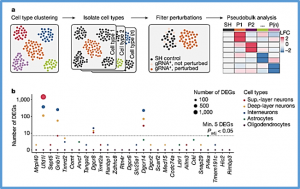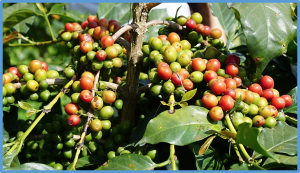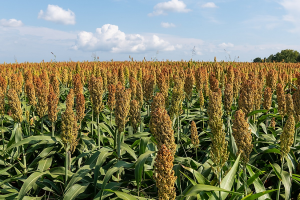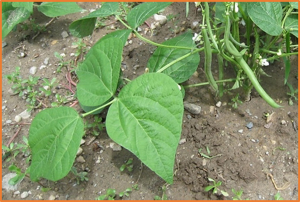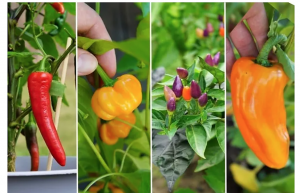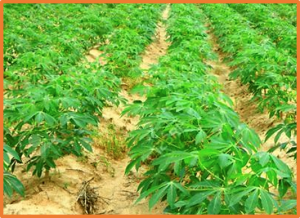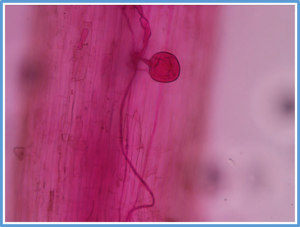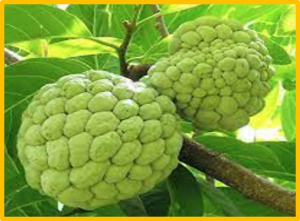The ever-growing compendium of genetic variants associated with human pathologies demands new methods to study genotype–phenotype relationships in complex tissues in a high-throughput manner1,2. Here we introduce adeno-associated virus (AAV)-mediated direct in vivo single-cell CRISPR screening, termed AAV-Perturb-seq, a tuneable and broadly applicable method for transcriptional linkage analysis as well as high-throughput and high-resolution phenotyping of genetic perturbations in vivo.
Calcium (Ca2+) is a second messenger in plants growth and development, as well as in stress responses. The transient elevation in cytosolic Ca2+ concentration have been reported to be involved in plants response to abiotic and biotic stresses. In plants, Ca2+-induced transcriptional changes trigger molecular mechanisms by which plants adapt and respond to environment stresses.
Humans have had a major influence on the dissemination of crops beyond their native range, thereby offering new hybridization opportunities. Characterizing admixed genomes with mosaic origins generates valuable insight into the adaptive history of crops and the impact on current varietal diversity. We applied the ELAI tool-an efficient local ancestry inference method based on a two-layer hidden Markov model to track segments of wild origin in cultivated accessions in the case of multiway admixtures.
The root system architecture (RSA) of crop plants influences adaptation to water-limited conditions and determines the capacity of a plant to access soil water and nutrients. Four key root traits (number, angle, length and dry mass) were evaluated in a diversity panel of 1771 Ethiopian sorghum landraces using purpose-built root chambers. Significant genetic variation was observed in all studied root traits, with nodal root angle ranging from 16.4° to 26.6°, with a high repeatability of 78.9%.
Plant karyotypes evolve through structural rearrangements often associated with polyploidy or dysploidy. The genus Phaseolus comprises ~ 90 species, five of them domesticated due to their nutritional relevance. Most of the species have 2n = 22 karyotypes and are highly syntenic, except for three dysploid karyotypes of species from the Leptostachyus group (2n = 20) that have accumulated several rearrangements.
Although pulses are nutritious foods containing high amounts of protein, fiber and phytochemicals, their consumption and use in the food industry have been limited due to the formation of unappealing flavors/aromas described as beany, green, and grassy. Lipoxygenase (LOX) enzymes are prevalent among pulse seeds, and their activity can lead to the formation of specific volatile organic compounds (VOCs) from certain polyunsaturated fatty acids (PUFAs).
To maximise the benefit of genebank resources, accurate and complete taxonomic assignments are imperative. The rise of genebank genomics allows genetic methods to be used to ensure this, but these need to be largely automated since the number of samples dealt with is too great for efficient manual recategorisation, however no clearly optimal method has yet arisen. A recent landmark genebank genomic study sequenced over 10,000 genebank accessions of peppers (Capsicum spp.),
The plant-specific RWP-RK transcription factor family plays a central role in the regulation of nitrogen response and gametophyte development. However, little information is available regarding the evolutionary relationships and characteristics of the RWP-RK family genes in cassava, an important tropical crop. Herein, 13 RWP-RK proteins identified in cassava were unevenly distributed across 9 of the 18 chromosomes (Chr), and these proteins were divided into two clusters based on their phylogenetic distance
Soybean is an S-loving crop, and continuous cropping might cause soil sulfur shortage. The primary objectives of this study are to determine whether Funneliformis mosseae (F. mosseae) can enhance the content of available S in S-deficient soil and thereby improve the sulfur utilization rate in soybean. The experiment used Heinong 48 (HN48), a soybean variety with a vast planting area in Heilongjiang Province, and F. mosseae was inoculated in the soil of soybean that had been continuously cropped for 0 and 3 years.
Inheritance of the presence/absence of seeds in Annona squamosa is mediated by a single fully recessive gene and is caused by a deletion of the INNER NO OUTER (INO) locus. For some fruits, seedless varieties are desirable for consumption and processing. In the sugar apple tree (Annona squamosa L.), the seedless trait in the Thai seedless (Ts) and Brazilian seedless (Bs) accessions was associated with defective ovules and an apparent deletion of the INNER NO OUTER (INO) ovule development gene locus.


 Curently online :
Curently online :
 Total visitors :
Total visitors :
